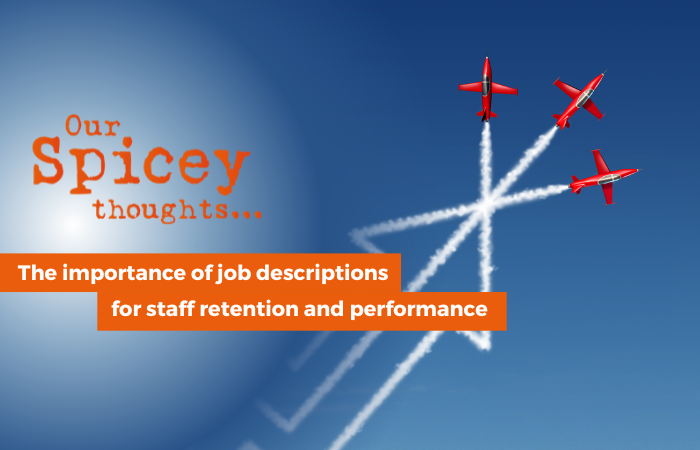
New years roll around at an alarming pace.
The year only just seems to start and then before you know it, you are singing Auld Lang Syne, raising a glass, reviewing the year that has been and preparing your business for another trip around the sun.
But this new year feels unlike the others we have experienced before.
2021 was meant to be our fresh start after a rather trying 2020. Then, it pulled a total fast one on us and turned out to be worse!
So, as we cautiously begin 2022, we have none of the lofty ambitions of last year. This will not be our year to return to life as it was before COVID.
This will be a different kind of new year. But, we are no less optimistic about it!
Let’s explore how you can make the most of another uncertain new year and prepare your team for the next 12 months.
Beginning A Different Kind Of New Year
Acknowledge The Year That Was
It is pretty tempting to sweep the events of 2021 under the rug and pretend that they didn’t happen. Not only were we dealing with potential threats to our health, but we all had an additional layer of stress created by working from home. Juggling home schooling, the endless quest for uninterrupted work time, worries about job security and toilet paper shortages were no joke!
So, now is the time to congratulate your whole team for making it out the other side.
Look back on the year and celebrate the things that went well. Thank your team for their dedication in tough times and congratulate yourselves for making it work. While the year was hard, it taught many businesses that work conditions could be flexible. Now, we can continue that flexibility and use it to our advantage. Allowing your team to continue embracing flexible hours and working locations where practical, will be a great morale booster.
Maintaining Mindset
All the stresses of the last two years might have had a negative impact on your staff morale. And when morale is low, so too is productivity and output.
Helping your team maintain a positive mindset despite everything that has happened is an essential new year task. The right mindset will boost productivity, increase employee engagement, and help to retain valuable team members.
With a new protection framework now in place, we should hopefully see fewer disruptions to life and business operations. So, capitalise on that positivity by allowing your team to work when they are most productive.
Physical safety has been a huge focus in the last two years and we have the masks and hand sanitiser to prove it. But, mental wellbeing and safety are just as important. Help your team manage their schedules to prevent burnout, connect with each individual to check how they are coping, and encourage the whole team to take their breaks and holidays.
Keep The Comms Flowing
Your team have dealt with a lot of uncertainty lately and we are not out of the woods yet. It would appear COVID is here to stay, so make sure you are communicating well and often with your team.
Give them as much information as you possibly can as this will reduce some stress and build an important level of trust. While targets might move, dates might change and the goalposts might shift, your team will appreciate the transparency of regular updates and receiving up to date information.
By establishing open lines of communication from your side, your team will also feel as though they can share concerns or suggestions they might have. This allows them to feel as if they have some control over an uncertain situation. Of course, that will only mean good things for their overall morale!
Unifying Under A Collective Vision
No one can possibly predict what will happen this year, the last two years have certainly proven that! Yet, you can establish a vision for how you want your business to operate, the characteristics you value and the impact you want to make.
By creating this vision, you are providing your whole team with a roadmap for the year. While there might be some unexpected potholes to navigate or bridges to build, the end destination remains the same.
By unifying your team under a collective vision they will feel valued, important and part of something bigger than just themselves. It will help you all to move forward and stay optimistic, regardless of what the year might bring.
Make Time for Fun
In the midst of a global pandemic, it is easy for work and home life to feel very serious. With restrictions to adhere to, daily news reports to read, mandates to follow and ever-increasing stress levels, things can get negative quickly.
But, they really don’t have to. Just because there is some serious stuff going on in the outside world, it doesn’t mean your team can’t make time for fun.
Connecting with each other in a social way can lighten the mood and build a great team culture. Whether you choose to have a monthly quiz night over Zoom or Microsoft Teams, a picnic in the park with the cricket bat and beverages, or a family friendly game of Never Have I Ever, your team will be able to blow off steam and connect.
Laughter is the best medicine, so keep things fun and lighthearted where appropriate.
Looking Ahead
Rather than looking back on everything you have been through, look forward towards the amazing things you could achieve this year. That will keep your whole team focused on the future and optimistic about what the year will bring.
While things might remain uncertain, you can keep your team moving forward and unified under a clear vision and collective goals. This will ensure they maintain a positive mindset and together you can overcome any future challenges.
Want some more practical ways to maintain great staff morale during a very different kind of new year? Then we can help you do it. Full of Spice and practical, actionable strategies, our team will help your team remain strong in the year ahead. Contact us today.



